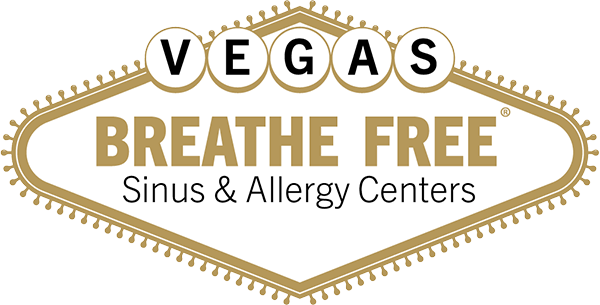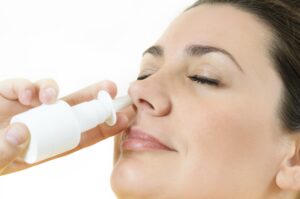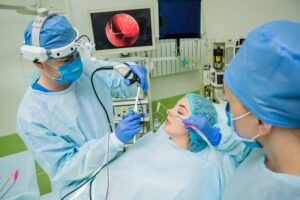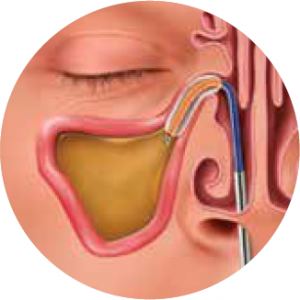PART II
Treating Sinusitis
There are multiple ways to treat sinusitis. Which one is best depends on the causes of the problem. Treating sinusitis with medication can be effective for acute (occasional) sinusitis but chronic sinusitis can often be better treated by other methods.
How to Avoid Sinusitis
Preventing sinusitis from occurring at all is the ideal approach. Washing hands, using wipes and avoiding contact with people who are sick are key. Avoiding smoky environments is always advisable. If there are a lot of airborne dust particulates, pollen, pollutants, or if you’re exposed to lot of people who are coughing or sneezing, a face mask may help filter out pollutants before they reach the sinuses.
Across the world, there are climates that have varying levels of humidity. In Florida, humidity regularly exceeds 90%; in Las Vegas, it tends to be less than 10%. The ideal humidity for the nose and sinuses is 40-50%. A humidifier or a dehumidifier may be helpful to improve the sinuses function properly if you live in environment that is not within this optimal range.
Avoiding allergens that trigger allergies is the best way to avoid allergic reactions that trigger sinusitis. Finding out exactly what you are allergic to is the first step. With that knowledge in hand, you can be more effective in avoiding the items that give you trouble.
If you have structural issues with your nasal passage such as a deviated septum, constricted nasal pathways, or enlarged turbinates, sinus surgery or balloon sinuplasty may be the best long term solution.
Treating Sinusitis with Medication
The simplest treatment for sinusitis is medication. If you live in a dry climate, the easiest is water (either a steam inhaler or a facial steamer or simply hot water in a bowl that is inhaled) that can help to moisturize the sinuses. Steam treatments loosen secretions and allows bacteria and other pollutants to be cleared from the nose. In low humidity environments like Las Vegas, sinus secretions often become dry and sticky and become trapped in the sinuses. Bacteria grow quickly in this scenario; steaming helps prevent this.
Decongestants, antibiotics, nasal irrigation, and nasal steroids can also provide temporary relief. Decongestants do the opposite of a steam treatment but they serve a very important role to keep sinuses open which prevents the accumulation of fluid and bacteria. There is a balancing act for the use of decongestants in which it is desirable to open the sinuses up yet not overly dry the sinuses. Make sure you strictly follow medication instructions when taking decongestants and discuss with your doctor if the problem persists.
Pressure from sinusitis can lead to headaches; over the counter pain medication can help with this. Other readily available mediation that can thin the mucus such as Mucinex can help mucus to flow better and ease sinus congestion.
Medication is often all that is needed for mild, occasional sinus issues caused by allergies or the common cold. It’s important to discuss your medication with your doctor, as some medication may be better suited for your specific situation. For example, some medication such as Benadryl and Claritin may thicken your mucus, so it’s good to have a discussion with a professional to determine the best options for you.
For allergy sufferers, immunotherapy (allergy shots) can help minimize impact when allergens cannot be completely avoided. Medication reduces the symptoms while immunotherapy reduces overall sensitivity to allergens. Effectiveness of allergy shots can vary but it can be a crucial component of a long term strategy for people with allergies.
If a sinus infection occurs, antibiotics are traditionally the most effective treatment. Antibiotics are only available with a prescription from your doctor.
Treating Sinusitis with Surgery
Chronic sinusitis can often be best treated by fixing the root cause of the problem. This is often structural issues with the sinuses that block or restrict flow through the sinuses.
Endoscopic Sinus Surgery is one option. It is performed in a hospital with the patient under general anesthesia. During this procedure, the surgeon reshapes the sinuses surgically to correct blocked or restricted pathways. Additional surgeries such as turbinate reduction can be done to address specific issues with nasal passages that lead
Treating Sinusitis with Balloon Sinuplasty
Balloon Sinuplasty, a relatively new procedure, also reshapes the sinus pathways but does so without surgery. It is performed in the doctor’s office with just a numbing anesthesia applied to the sinuses and a small balloon. The balloon is gently inflated in the sinus pathways and is then removed, expanding sinus pathways and allowing them to work better.
Balloon Sinuplasty is becoming more commonplace, as it does not require surgery in a hospital and recovery is quick – usually less than one day.
Final Thoughts
Sinusitis affects millions of people every year, at differing levels of severity. It can cause congestion, difficulty breathing, loss of sense of smell and taste, snoring, sinus headaches, and infections. Usually, it can be controlled with the correct use of the right medications.
For chronic sufferers, sinus surgery or balloon sinuplasty that address the underlying issues with the nasal passages can be a good option in the long run.







